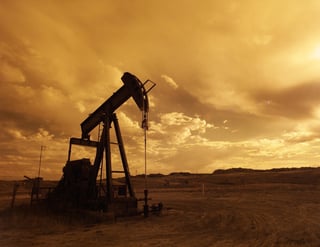How Wireless Networking Increases Oilfield Safety and Productivity

Digital technologies have revolutionized oilfield workflows, but before they can deliver on their true potential, oil companies must have properly planned and configured wireless networks.
In increasingly uncertain fossil fuel markets, oil and gas companies have shifted their focus from boosting profits to cutting costs, and digital technologies have proven integral to this mission. Accenture’s 2016 Oil and Gas Digital Trends Survey revealed that 72% of oil and gas companies believe that cost reduction is either “an important” or “the most important” challenge that digital technologies can help them overcome.
Beyond improving oilfield efficiency and productivity, digital tech has also resulted in improved worker safety and easier, more reliable capacity planning. According to a report from the Harvard Business Review, the oil and gas industry ranks in the top third of industries in terms of overall digitization.
Oil and gas mining is an industry with roots that stretch back all the way to the mid-19th century, but recent tech innovations would make the field unrecognizable to someone who left it as recently as 20 years ago. The introduction of high-tech sensors, advanced monitoring software, and an array of wireless devices has completely transformed the way oilfields are run.
The Digital Oilfield
The key to maximizing the output of an oilfield is minimizing well downtime. Research indicates that a mere 10 hours of downtime can cost an oil company upwards of $125,000, meaning it’s absolutely essential for companies to closely track pump activity and tank levels at all times. Sensor platforms called Remote Terminal Units (RTUs) enable workers to monitor and in some cases adjust critical production parameters like flow rates, line and wellhead pressure, and well temperature from the comfort of an office or trailer. The technology has unsurprisingly become a fixture of the “digital oilfield.”
The data collected by RTUs and other network-connected sensors is not only helpful for real-time well management, but for proactive capacity planning, as well. Inadequate or incomplete data can make output optimization all but impossible for oil producers. Analysts can construct tentative production models based on historical data, but these will rarely be able to provide insight into the kind of deeper production inefficiencies that oil companies must eliminate in order to maximize the returns from their fields.
On the safety front, oil companies are now able to program their early warning alert systems to broadcast tones and recorded voice messages to specific sirens over digital radio networks in the event of an emergency or accident. Many companies even install redundant communications switches throughout their fields to ensure that emergency alerts get broadcasted even if an explosion destroys nearby network infrastructure.
Similarly, oil and gas companies like to keep a set of eyes on their wells in order to assess safety concerns prior to and during well visits. Properly trained workers should be able to spot signs of trouble in RTU data, but high-definition video feeds are a critical failsafe for oilfield safety monitors. Surveillance systems are often run via Physical Access Control Systems (PACS), which ensure that oil companies have everything they need to deploy video surveillance in an effective and affordable manner.
The Importance of Strong Network Design
Ultimately, the tremendous potential of the digital oilfield is only realized when a field has a strong, reliable network. The data gathered by remote sensors has incredible value, but far too often, it gets lost in transmission from the well pads to the central field office. Out-of-date technology, radio frequency interference (RFI) from adjacent oil fields, and topographical features can all lead to temporary network lapses, but these tend to be much worse — and much more frequent — when companies fail to do their due diligence during network setup.
TTI has been providing petrochemical companies with comprehensive IT and network support for over 25 years. As such, we can confidently say we have the industry-specific expertise necessary to help oil and gas companies implement and optimize a wide variety of wireless networking solutions. The physical elements of an oilfield present significant obstacles to consistent network coverage, ones that take real experts to overcome. What’s more, the high value of the final product makes oilfields an attractive target for cyber criminals of all stripes.
Delivering productivity-boosting network access to their workers at any location and at any time while still maintaining the highest level of network security is a challenge, but with a partner like Turn-key Technologies, Inc, oil and gas companies have the power to optimize the digital oilfield.
If you’re interested in learning more about how an optimized wireless network can increase oilfield safety and productivity, visit our PetroChem Solutions page.




